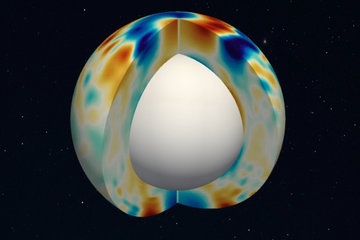Why do different helioseismology techniques give vastly different answers for subsurface convective flows?
Time-distance helioseismology versus ring-diagram helioseismology of subsurface flows in the Sun
Convection is the mechanism by which energy is transported through the outermost layers of the sun. Solar turbulent convection is notoriously difficult to model across the entire convection zone, where the density spans many orders of magnitude. In PNAS, Hanasoge et al. (2012) used time-distance helioseismology to derive stringent empirical constraints on the amplitude of large-scale convective velocities in the solar interior at radius 0.96 Rsun. They reported an upper limit that is far smaller than predicted by hydrodynamic numerical simulations.
Subsequently, Greer et al. (2015) used a different method known as ring-diagram helioseismology and found flow speeds in agreement with the numerical simulations. This project is to identify the reasons for the inconsistency between these two helioseismic results and to develop a consistent approach to obtain a robust constraint on solar convection below the solar surface.











